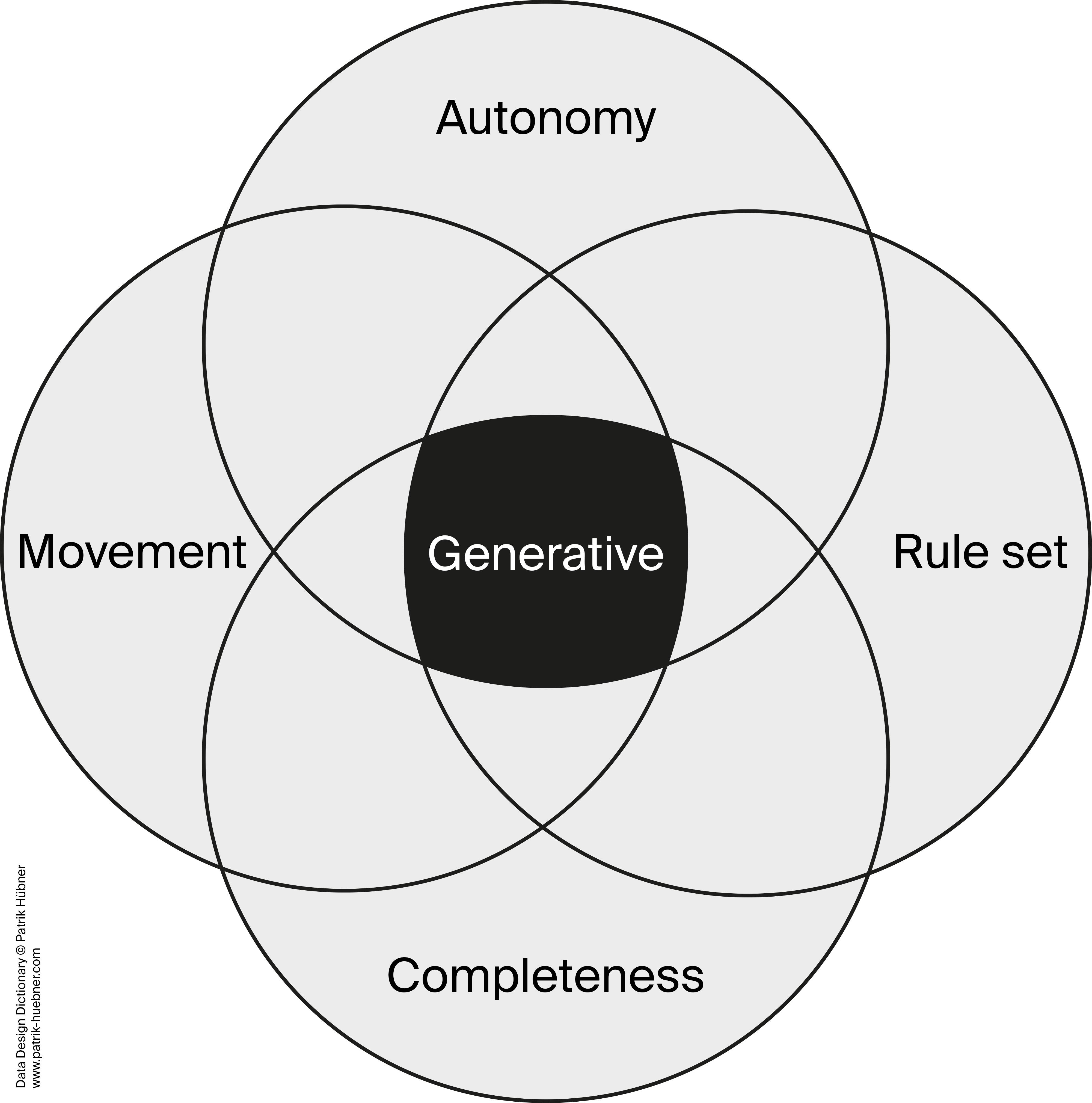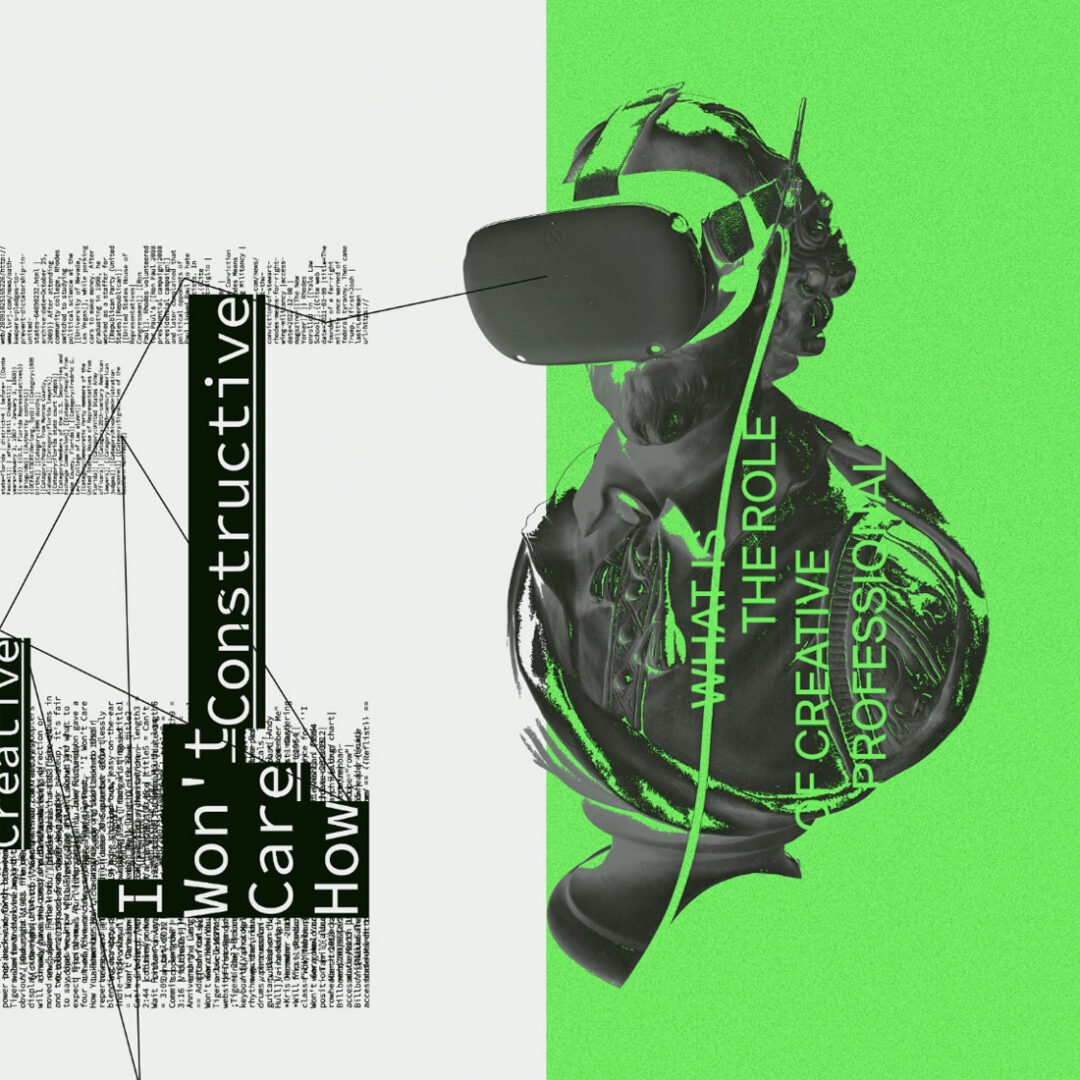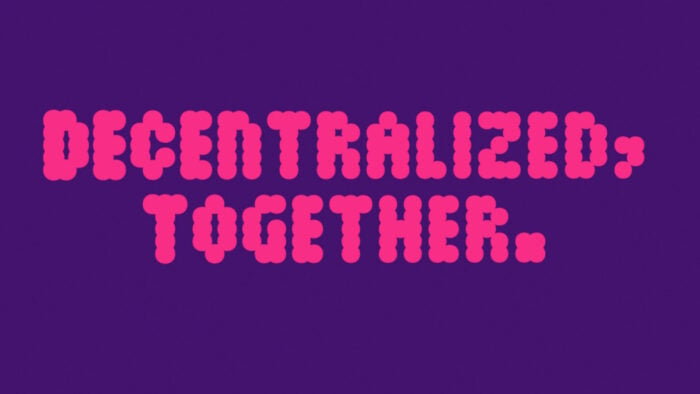What is Generative Design?
Data-Design Dictionary
A dictionary to illuminate data-driven generative design and creative coding.
The term ‘generative‘ has its root in ‘generation’ or ‘generate’ and means something like ‘produced’, ‘created’ or ‘brought forth’. In the context of data-driven communications design, generative design is based on multifaceted systemic and programmatic influences and actively incorporates data – and thus real events – into the design process. This approach, and the variety of strategies involved, allow the creation of new types of storytelling, design and branding systems. It is important to note that the generative term does not describe a specific aesthetic, but rather a specific creative process that allows ideas to take shape via rules.
In generative design, designers start by understanding the context and the message they want to communicate. They then undergo a process of in-depth research to find the data that will serve as the foundation for the design or dynamic brand identity. Unlike traditional design approaches, which might rely on intuition or loose associations, generative designers set specific rules based on real-world measurements. These rules guide a computer program that, in a process of co-creation with the designer, generates the final form of the design. This process is often guided and enabled by structured and logical problem-solving strategies that are based on computational thinking and systemic thinking.
Hover over elements to learn more. Click-and-drag elements to move them around.
“Generative art refers to any art practice in which the artist uses a system, such as a set of natural language rules, a computer program, a machine, or other procedural invention, that is set into motion with some degree of autonomy, thereby contributing to or resulting in a completed work of art.”[1] Thus, the four defining characteristics of a generative system are:
Rule set →
Autonomy →
Movement →
Generative design systems are able to produce an infinite number of results. As its usual mode of existence is process, movement as such is one basic requirements for that. Knowing that, only the result of a generative process – the form – can be rigid.
Completeness →
As soon as a generative system starts moving, can act autonomously and produces results, it is considered complete, because it has detached itself from its dependence on its developer(s).

The term generative design describes systems that are set in motion with a certain degree of autonomy in order to produce a completed or in-progress piece of work. In this context, an interesting insight emerges: Both the intention and the technique used by the designer, as well as the medium on which the work is based, are irrelevant for the designation of a work as generative. This means that it is not possible to determine on the basis of the form of a work whether or not it is the result of a generative process. The term generative design therefore does not refer to a specific aesthetic, but rather a creative process that allows ideas to be given form through rules. The specifc forms, i.e. the objects that emerge from the platonic idea and programmatic rules, are generated via a semi-autonomous process. This allows the form to emerge automatically, detached from the original designers of the program.
Whether in biology[9], linguistics[10] or art[11] – creative processes that run on the basis of programmatic rules and can achieve an infinite number of results can be observed in many areas of our world. Regardless of a specific discipline, researchers and practitioners use the term generative in their examination of rule-based, formative processes. Understanding that many aspects of programmed design can also be observed outside the world of communication design means that we can make use of the considerations and methods of these disciplines. The generative concept thus expands our vocabulary and allows us to enrich the world of design with unfamiliar perspectives and find inspiration outside of familiar paradigms. In the practice of generative design, for example, there are examples that make use of biological growth processes, the swarming behavior of animals or the vibrations of music to drive design processes through their use as organizing principles.
Additional quotes about generative
design and generative art
“So what is ‘generative design‘ exactly? There is no single definition of the term, but many complementary definitions with common characteristics [..]. Overall it can be described as a design method where generation of form is based on rules or algorithms, often deriving from computational tools [..]”[2]
“Generative aesthetics is now to be understood as the summary of all operations, rules, and theorems by the application of which to a set of material elements that can function as signs, in these aesthetic states (distributions or designs) are consciously and methodically producible. Generative aesthetics, then, is analogous to generative grammar in the sense that, like these propositions of a grammatical scheme, it provides realization of an aesthetic structure.”[3]
“Generative art uses a computer as an enabling technology. The work is generated by a computer program, but is not fully autonomous. The computer is guided to create the work using detailed instructions from the artist, who either writes the program or at least creates the method (algorithm) for the creation of the work.”[4]
“In the twenty-first century generative art encompasses a vast and expanding field, applied to any practice in which a computer program is coded by an artist to create experiences, and where the interplay of human intelligence and machine response drives the results.”[5]
“Generative art is a contemporary form of artistic creation, where the focus is not necessarily on the artwork or final product, but on the process of creation and the ideas that underlie it.”[6]
“Generative art is an umbrella term, coined for all artworks that have been created with the use of an autonomous system, such as an algorithm, computer code, or drawing machine. The generative artist collaborates with the algorithm, where handing over control is a large part of the process. The computer provides the infinite rigour and accuracy that humans don’t traditionally excel at, resulting in an overlap between the spheres of computer science, art, and design. It would have remained a quirk of graphic design or illustration if it weren’t for a key ingredient: a controlled quantity of randomness. By allowing certain elements to be directed by odd values, such as using physically imperfect tools to render a perfectly ordered set of instructions, generative artists create a space that allows each piece to land somewhere between order and chaos.”[7]
“Celestino Soddu (1994) defines generative design as ‘a morphogenetic process using algorithms structures as nonlinear systems for endless unique and unrepeatable results performed by an idea-code, as in nature‘. [..] The term ‘morphogenesis’ derives from the Greek words morphe (meaning ‘form’) and genesis (meaning ‘birth’), so could be literally translated as ‘birth of form’. As with the term ‘generative design’, there is no unique of definition of morphogenesis, and it seems that the terminology is changing in relation to emerging technologies and techniques.”[8]















